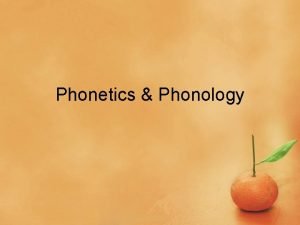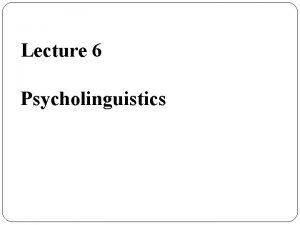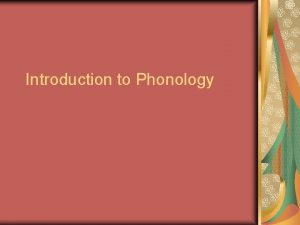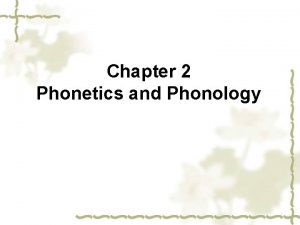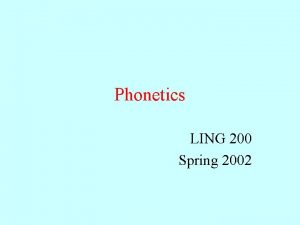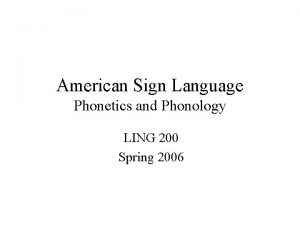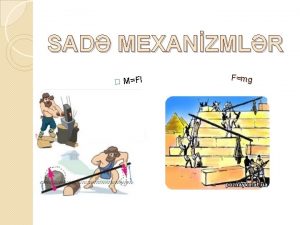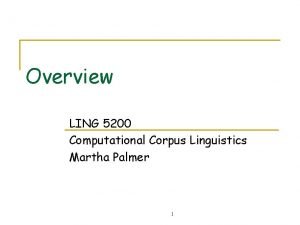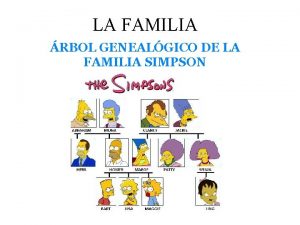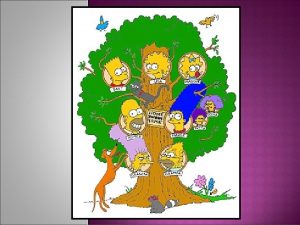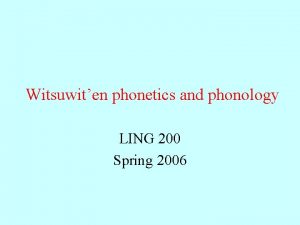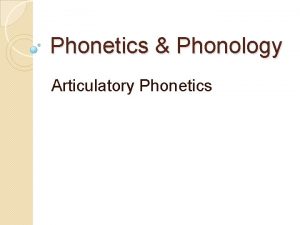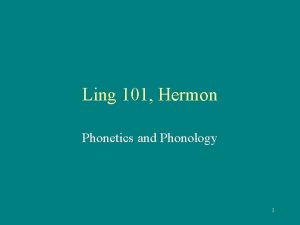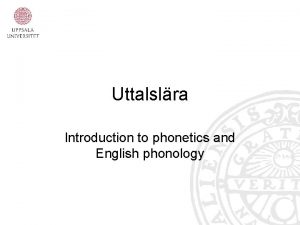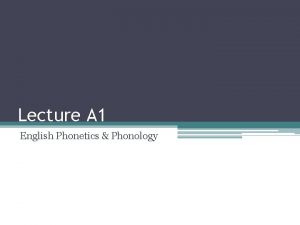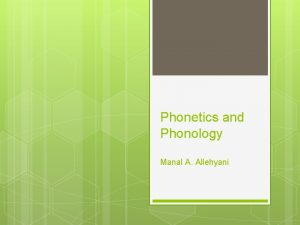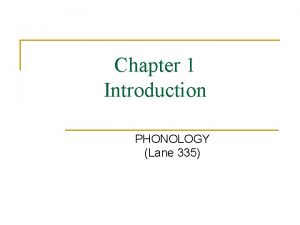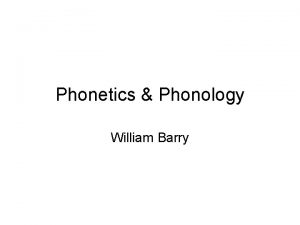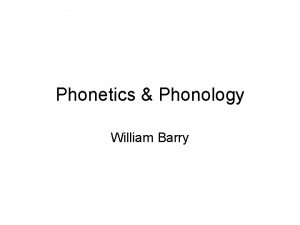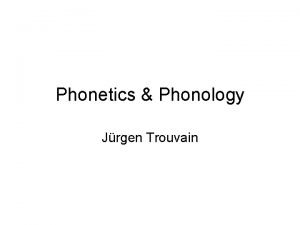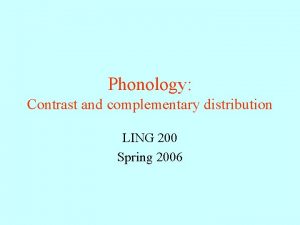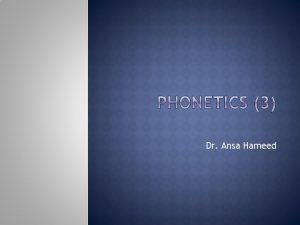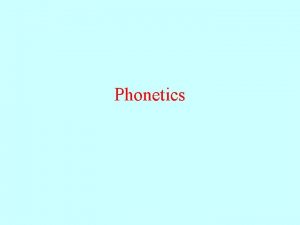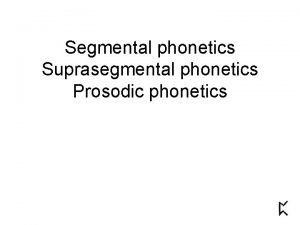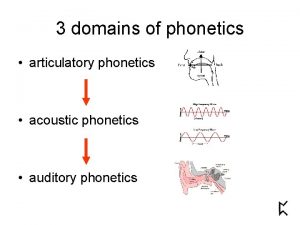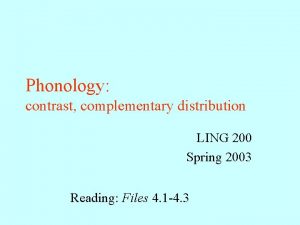Witsuwiten phonetics and phonology LING 200 Spring 2006







![Glottal stop [ ] stop made at the glottis: vocal cords brought together so Glottal stop [ ] stop made at the glottis: vocal cords brought together so](https://slidetodoc.com/presentation_image_h2/3674768f50164736e2ca4a17f63d0ac1/image-8.jpg)
![[ ] in Witsuwit’en • • [pe ] ‘dried fish’ [ en] ‘he, she’ [ ] in Witsuwit’en • • [pe ] ‘dried fish’ [ en] ‘he, she’](https://slidetodoc.com/presentation_image_h2/3674768f50164736e2ca4a17f63d0ac1/image-9.jpg)
![Some Witsuwit’en sounds Ejective stops and affricates: transcribed [C’] How to make a (canonical) Some Witsuwit’en sounds Ejective stops and affricates: transcribed [C’] How to make a (canonical)](https://slidetodoc.com/presentation_image_h2/3674768f50164736e2ca4a17f63d0ac1/image-10.jpg)
![Ejective affricates • [ts’] = ejective alveolar affricate – [p ts’ q] ‘his little Ejective affricates • [ts’] = ejective alveolar affricate – [p ts’ q] ‘his little](https://slidetodoc.com/presentation_image_h2/3674768f50164736e2ca4a17f63d0ac1/image-11.jpg)
![Ejective stops • [t’] = ejective alveolar stop – [nt’ q] ‘your collarbone’ • Ejective stops • [t’] = ejective alveolar stop – [nt’ q] ‘your collarbone’ •](https://slidetodoc.com/presentation_image_h2/3674768f50164736e2ca4a17f63d0ac1/image-12.jpg)

![Uvular place of articulation • [q] = voiceless uvular stop –[qis] ‘Chinook salmon’ –[q Uvular place of articulation • [q] = voiceless uvular stop –[qis] ‘Chinook salmon’ –[q](https://slidetodoc.com/presentation_image_h2/3674768f50164736e2ca4a17f63d0ac1/image-14.jpg)

![Palatal place of articulation • [c] = voiceless palatal stop – [c s] ‘hook’ Palatal place of articulation • [c] = voiceless palatal stop – [c s] ‘hook’](https://slidetodoc.com/presentation_image_h2/3674768f50164736e2ca4a17f63d0ac1/image-16.jpg)

![Labio-velar place of articulation • [kw] = voiceless labio-velar stop – [kwe ] ‘bag’ Labio-velar place of articulation • [kw] = voiceless labio-velar stop – [kwe ] ‘bag’](https://slidetodoc.com/presentation_image_h2/3674768f50164736e2ca4a17f63d0ac1/image-18.jpg)
![Lateral fricative and affricates • [l] = (voiced) lateral approximant – [l zth ç] Lateral fricative and affricates • [l] = (voiced) lateral approximant – [l zth ç]](https://slidetodoc.com/presentation_image_h2/3674768f50164736e2ca4a17f63d0ac1/image-19.jpg)


![Further details about Witsuwit’en sounds • [t z] ‘driftwood’ • [th z] ‘cane’ • Further details about Witsuwit’en sounds • [t z] ‘driftwood’ • [th z] ‘cane’ •](https://slidetodoc.com/presentation_image_h2/3674768f50164736e2ca4a17f63d0ac1/image-22.jpg)




![/ / Lowering In Witsuwit’en, [ ] is pronounced [ ] context of phonological / / Lowering In Witsuwit’en, [ ] is pronounced [ ] context of phonological](https://slidetodoc.com/presentation_image_h2/3674768f50164736e2ca4a17f63d0ac1/image-27.jpg)

![Distribution of [ ], [ ] in Witsuwit’en • [ ] occurs after p Distribution of [ ], [ ] in Witsuwit’en • [ ] occurs after p](https://slidetodoc.com/presentation_image_h2/3674768f50164736e2ca4a17f63d0ac1/image-29.jpg)
![Distribution of [ ], [ ] in Witsuwit’en All the places / / can Distribution of [ ], [ ] in Witsuwit’en All the places / / can](https://slidetodoc.com/presentation_image_h2/3674768f50164736e2ca4a17f63d0ac1/image-30.jpg)
![Distribution of [ ], [ ] in Witsuwit’en • The distribution of [ ] Distribution of [ ], [ ] in Witsuwit’en • The distribution of [ ]](https://slidetodoc.com/presentation_image_h2/3674768f50164736e2ca4a17f63d0ac1/image-31.jpg)
![Which of [ ], [ ] is more basic? • Which of the contexts Which of [ ], [ ] is more basic? • Which of the contexts](https://slidetodoc.com/presentation_image_h2/3674768f50164736e2ca4a17f63d0ac1/image-32.jpg)
![Summing up [ ], [ ] in Witsuwit’en • these vowel phones in complementary Summing up [ ], [ ] in Witsuwit’en • these vowel phones in complementary](https://slidetodoc.com/presentation_image_h2/3674768f50164736e2ca4a17f63d0ac1/image-33.jpg)



![Word list transcribed (broadly) phonetic ‘driftwood’ [t z] ‘cane’ [th z] ‘footwear’ [qh. E] Word list transcribed (broadly) phonetic ‘driftwood’ [t z] ‘cane’ [th z] ‘footwear’ [qh. E]](https://slidetodoc.com/presentation_image_h2/3674768f50164736e2ca4a17f63d0ac1/image-37.jpg)

- Slides: 38

Witsuwit’en phonetics and phonology LING 200 Spring 2006

Announcements and reminders

Witsuwit’en • apx. 180 speakers • a dialect of the Witsuwit’en-Babine language • Athabaskan family

Athabaskan family Eyak Tsek’ene Tlingit Witsuwit’en • variant spellings: Athapaskan, Athabascan, Athapascan • about 37 lgs in this family Navajo • estimated timedepth: 2500 years

Na-Dene Tlingit Proto-Athabaskan-Eyak Proto-Athabaskan CAY S. AK Tset CBC PCA NW Can Sar Apachean Deg Xinag Witsuwit’en Tsek’ene CAY = Central Alaska-Yukon; S. AK = S. Alaska; Tset = Tsetsaut, CBC = Central BC, PCA = Pacific Coast Athabaskan; NW Can = NW Canada; Sar = Sarcee

Some Witsuwit’en speakers Mabel Forsythe Lillian Morris, Peter John

A Witsuwit’en text • Lillian and Mabel talking together – 2: 39 conversation – recorded 1997 – some background noise – what unfamiliar sounds do you hear?
![Glottal stop stop made at the glottis vocal cords brought together so Glottal stop [ ] stop made at the glottis: vocal cords brought together so](https://slidetodoc.com/presentation_image_h2/3674768f50164736e2ca4a17f63d0ac1/image-8.jpg)
Glottal stop [ ] stop made at the glottis: vocal cords brought together so no air can pass through the glottis uh-oh [ o] Hawai’i [h waj i] button [b n] important [Imp r nt]
![in Witsuwiten pe dried fish en he she [ ] in Witsuwit’en • • [pe ] ‘dried fish’ [ en] ‘he, she’](https://slidetodoc.com/presentation_image_h2/3674768f50164736e2ca4a17f63d0ac1/image-9.jpg)
[ ] in Witsuwit’en • • [pe ] ‘dried fish’ [ en] ‘he, she’ [so mpi] ‘no one’ [c’ te ni] ‘legend’
![Some Witsuwiten sounds Ejective stops and affricates transcribed C How to make a canonical Some Witsuwit’en sounds Ejective stops and affricates: transcribed [C’] How to make a (canonical)](https://slidetodoc.com/presentation_image_h2/3674768f50164736e2ca4a17f63d0ac1/image-10.jpg)
Some Witsuwit’en sounds Ejective stops and affricates: transcribed [C’] How to make a (canonical) velar ejective: 0. Make a velar stop. Make a glottal stop.
![Ejective affricates ts ejective alveolar affricate p ts q his little Ejective affricates • [ts’] = ejective alveolar affricate – [p ts’ q] ‘his little](https://slidetodoc.com/presentation_image_h2/3674768f50164736e2ca4a17f63d0ac1/image-11.jpg)
Ejective affricates • [ts’] = ejective alveolar affricate – [p ts’ q] ‘his little finger’ • Compare [ts] = voiceless alveolar affricate – [p ts q] ‘his outer ear’ • Waveforms: (waveform = acoustic graph of energy x time) [p q] t s’ q] [p t s
![Ejective stops t ejective alveolar stop nt q your collarbone Ejective stops • [t’] = ejective alveolar stop – [nt’ q] ‘your collarbone’ •](https://slidetodoc.com/presentation_image_h2/3674768f50164736e2ca4a17f63d0ac1/image-12.jpg)
Ejective stops • [t’] = ejective alveolar stop – [nt’ q] ‘your collarbone’ • Compare [t] = voiceless alveolar stop – [nt q] ‘up’ [n t ’ q] [n t q]

Uvular place of articulation
![Uvular place of articulation q voiceless uvular stop qis Chinook salmon q Uvular place of articulation • [q] = voiceless uvular stop –[qis] ‘Chinook salmon’ –[q](https://slidetodoc.com/presentation_image_h2/3674768f50164736e2ca4a17f63d0ac1/image-14.jpg)
Uvular place of articulation • [q] = voiceless uvular stop –[qis] ‘Chinook salmon’ –[q ] ‘rabbit’ –[nt q] ‘up’ • [qh] = voiceless aspirated uvular stop –[qh. E] ‘footwear’ • [q’] = voiceless uvular ejective (stop) –[q’ ] ‘backwards’ • [ ] = voiceless uvular fricative –[ E] ‘grease’ • [ ] = (voiced) uvular approximant –[p t ene] ‘he’s cooking’

Palatal place of articulation
![Palatal place of articulation c voiceless palatal stop c s hook Palatal place of articulation • [c] = voiceless palatal stop – [c s] ‘hook’](https://slidetodoc.com/presentation_image_h2/3674768f50164736e2ca4a17f63d0ac1/image-16.jpg)
Palatal place of articulation • [c] = voiceless palatal stop – [c s] ‘hook’ – [nece] ‘it healed’ – [wec th s] ‘I’m not strong’ • [ch] = voiceless aspirated palatal stop – [ch s] ‘down feather’ • [c’] = palatal ejective (stop) – [c’ th j] ‘gun’ • [ç] = voiceless palatal fricative – [l zth ç] ‘knife’ – [n teç] ‘he’s dancing’ • [j] = (voiced) palatal glide

Labio-velar place of articulation
![Labiovelar place of articulation kw voiceless labiovelar stop kwe bag Labio-velar place of articulation • [kw] = voiceless labio-velar stop – [kwe ] ‘bag’](https://slidetodoc.com/presentation_image_h2/3674768f50164736e2ca4a17f63d0ac1/image-18.jpg)
Labio-velar place of articulation • [kw] = voiceless labio-velar stop – [kwe ] ‘bag’ • [kwh] = voiceless aspirated labio-velar stop – [kwh n] ‘fire’ • [kw’] = labio-velar ejective (stop) – [kw’is] (personal name) – [kw’ s l] ‘bead’ • [xw] = voiceless labio-velar fricative – [xw s] ‘thorn’ • [w] = (voiced) labio-velar glide – [n w s] ‘soapberry’
![Lateral fricative and affricates l voiced lateral approximant l zth ç Lateral fricative and affricates • [l] = (voiced) lateral approximant – [l zth ç]](https://slidetodoc.com/presentation_image_h2/3674768f50164736e2ca4a17f63d0ac1/image-19.jpg)
Lateral fricative and affricates • [l] = (voiced) lateral approximant – [l zth ç] ‘knife’ • [ ] = voiceless lateral fricative – [ j l] ‘it’s white; goat (lit. ‘that which is white’)’ • [t ] = voiceless lateral affricate – [s t et] ‘it’s licking me’ • [t h] = voiceless aspirated lateral affricate – [n c t h s] ‘I’m kneading it’ • [t ’] = ejective lateral affricate – [s t ’et] ‘he farted’

Witsuwit’en consonant chart labial stops p p’ t th t’ affricates t t h t ’ sz fricatives lateral labio-velar uvular c ch c’ kw kwh kw’ q qh q’ ç xw j w m n approxim ants lateral palatal glottal ts tsh ts’ lateral nasals alveolar l h

Witsuwit’en vowels front central unrounded high mid higher-mid low i e E æ back rounded u o
![Further details about Witsuwiten sounds t z driftwood th z cane Further details about Witsuwit’en sounds • [t z] ‘driftwood’ • [th z] ‘cane’ •](https://slidetodoc.com/presentation_image_h2/3674768f50164736e2ca4a17f63d0ac1/image-22.jpg)
Further details about Witsuwit’en sounds • [t z] ‘driftwood’ • [th z] ‘cane’ • Why wasn’t [ ] listed in the vowel inventory for Witsuwit’en? – Answer: [ ] is a predictable detail about the pronunciation of Witsuwit’en, and predictable information is usually omitted.

Broad vs. narrow transcription • A transcription can vary in the amount of phonetic detail included – Relatively a lot of detail: narrow transcription • e. g. [th z] ‘cane’ [t z] ‘driftwood’ – Relatively less detail: broad transcription • e. g. [th z] ‘cane’ [t z] ‘driftwood’ • When should [ ] be included in a transcription of Witsuwit’en?

Languages contain predictable vs. unpredictable information • Unpredictable, list-like information – this kind of information represented in dictionary a phonological • Predictable, rule-like information rule – e. g. in Witsuwit’en, schwa is pronounced as a lower-mid central vowel (in one context) – this kind of information represented in grammar

Broadest transcription • Represents only unpredictable information • Phonemic representation: /th z/ phonological rules e. g. lower vowel phonetic representation [th z] • Phonemes: the elements of a phonemic representation (enclosed in slash brackets)

When to use broad vs. narrow transcription? • Typically, transcription is as broad as possible – Symbols in consonant, vowel charts are phonemes • In Witsuwit’en, [ ] would be transcribed only in a phonetic study of vowel quality (e. g. Ch. 4 of Hargus (to appear))
![Lowering In Witsuwiten is pronounced context of phonological / / Lowering In Witsuwit’en, [ ] is pronounced [ ] context of phonological](https://slidetodoc.com/presentation_image_h2/3674768f50164736e2ca4a17f63d0ac1/image-27.jpg)
/ / Lowering In Witsuwit’en, [ ] is pronounced [ ] context of phonological rule after voiceless aspirated stops, ejective stops, or voiceless fricatives.

Context for / / Lowering After any of: labial stops affricates lateral fricatives lateral alveolar p’ th t’ tsh ts’ t h t ’ s palatal labio-velar uvular ch c’ kwh kw’ qh q’ ç xw h
![Distribution of in Witsuwiten occurs after p Distribution of [ ], [ ] in Witsuwit’en • [ ] occurs after p](https://slidetodoc.com/presentation_image_h2/3674768f50164736e2ca4a17f63d0ac1/image-29.jpg)
Distribution of [ ], [ ] in Witsuwit’en • [ ] occurs after p t c kw q j w ch c’ kwh kw’ qh q’ ç xw h ts t z m n l • [ ] occurs after p’ th t’ tsh ts’ t h t ’ s
![Distribution of in Witsuwiten All the places can Distribution of [ ], [ ] in Witsuwit’en All the places / / can](https://slidetodoc.com/presentation_image_h2/3674768f50164736e2ca4a17f63d0ac1/image-30.jpg)
Distribution of [ ], [ ] in Witsuwit’en All the places / / can occur in Witsuwit’en e. g. [t z], [m n], [p l t], [p z z] t__ m__ th__ __ p__ l__ xw__ __ z__ s__ e. g. [th z], [xw s], [ t], [s s]
![Distribution of in Witsuwiten The distribution of Distribution of [ ], [ ] in Witsuwit’en • The distribution of [ ]](https://slidetodoc.com/presentation_image_h2/3674768f50164736e2ca4a17f63d0ac1/image-31.jpg)
Distribution of [ ], [ ] in Witsuwit’en • The distribution of [ ] complements that of [ ]. • Or, [ ] and [ ] are in complementary distribution. • Only the basic member of a set of sounds which are in complementary distribution is considered phonemic (appears in vowel chart, etc. ).
![Which of is more basic Which of the contexts Which of [ ], [ ] is more basic? • Which of the contexts](https://slidetodoc.com/presentation_image_h2/3674768f50164736e2ca4a17f63d0ac1/image-32.jpg)
Which of [ ], [ ] is more basic? • Which of the contexts is “simpler”? e. g. reduces to natural class of sounds or single position within word – rule applies in simpler context • (not easy to tell in this case from just the information provided so far; other facts suggest that [ ] is derived from / /)
![Summing up in Witsuwiten these vowel phones in complementary Summing up [ ], [ ] in Witsuwit’en • these vowel phones in complementary](https://slidetodoc.com/presentation_image_h2/3674768f50164736e2ca4a17f63d0ac1/image-33.jpg)
Summing up [ ], [ ] in Witsuwit’en • these vowel phones in complementary distribution • [ ] derived by lowering rule • Post-script – /o/ lowers to [ ] and /æ/ retracts to [A] in the same context that / / lowers to [ ]

Inventory of Witsuwit’en vowel phones front central unrounded high mid higher-mid low i e E æ A back rounded u o

Sounds which are not in complementary distribution • Contrast, i. e. occur in the same context – [ ] vs. [l] • [ ] ‘dam’ • [ l] ‘conifer’ – [s] vs. [z] • [c’ z s] ‘bag, case’ • [c’ z z] ‘hide, skin’ – [m] vs. [p] • [m n] ‘roof’ • [p n] ‘lake’

Applied phonology • The Witsuwit’en writing system represents the phonemes, not all of the phonetic sounds – Designed by a missionary in the 70 s for use on a typewriter – Revised 1993 (by your professor)
![Word list transcribed broadly phonetic driftwood t z cane th z footwear qh E Word list transcribed (broadly) phonetic ‘driftwood’ [t z] ‘cane’ [th z] ‘footwear’ [qh. E]](https://slidetodoc.com/presentation_image_h2/3674768f50164736e2ca4a17f63d0ac1/image-37.jpg)
Word list transcribed (broadly) phonetic ‘driftwood’ [t z] ‘cane’ [th z] ‘footwear’ [qh. E] ‘grease’ [ E] ‘straight up’ [nt q] ‘your collarbone’ [nt’ q] orthographic <diz> <tiz> <kë> <khë> <ndik> <nt’ik>

Summary • Phonetic transcription typically as streamlined as possible • Predictable, rule-governed details are omitted • Distribution is a major clue as to predictability • Languages differ in – inventories of contrastive sounds – rules for pronunciation of sounds
 Phonetically definition
Phonetically definition Differences between phonetics and phonology
Differences between phonetics and phonology Difference between phonetics and phonology
Difference between phonetics and phonology Phonetics and phonology
Phonetics and phonology Answer key
Answer key Drc model of reading
Drc model of reading Terminal devoicing
Terminal devoicing Introduction to general phonetics and phonology
Introduction to general phonetics and phonology What is the difference between phonetics and phonology
What is the difference between phonetics and phonology What is the difference between phonetics and phonology
What is the difference between phonetics and phonology Phonetics and phonology
Phonetics and phonology Phonetics vs phonology
Phonetics vs phonology Phonetics vs phonology
Phonetics vs phonology 100 + 200 + 300
100 + 200 + 300 Ling 200
Ling 200 Ling 200
Ling 200 Kim ki duk summer fall winter spring
Kim ki duk summer fall winter spring When is spring summer autumn and winter
When is spring summer autumn and winter 200+200+100+100
200+200+100+100 200 + 200 = 400
200 + 200 = 400 200 200 300
200 200 300 100 200 300
100 200 300 100 + 100 200
100 + 100 200 100 200 300
100 200 300 Discourse analysis and phonology
Discourse analysis and phonology Peaking intonation examples
Peaking intonation examples Jin ling cigarettes
Jin ling cigarettes Qüvvədə qazanc
Qüvvədə qazanc Ling
Ling Erin ling
Erin ling Ling oa
Ling oa Mei-ling from singapore was preparing
Mei-ling from singapore was preparing Arbol genealogico de los simpson
Arbol genealogico de los simpson Dr ng li ling
Dr ng li ling Nien-ling wacker
Nien-ling wacker Supperprof
Supperprof Ling simpson
Ling simpson Ling adder
Ling adder Archibald maclaren contribution in physical education
Archibald maclaren contribution in physical education



